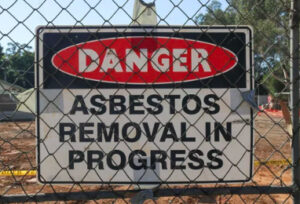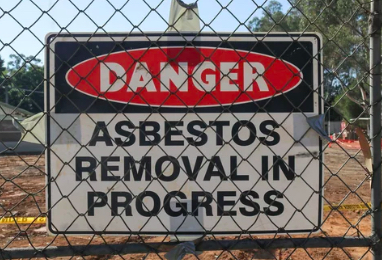Asbestos fences pose a health risk for homeowners and their neighbors, particularly in poor conditions. If not regularly painted and sealed, they can release microscopic fibers into the air, which, when inhaled, can cause lung cancer and mesothelioma. When asbestos fencing becomes damaged, hiring licensed asbestos removalists should be a priority. It’s important to choose a contractor with the following qualities:
Safety First
 It’s important to understand that unless it’s absolutely essential, asbestos fence removal should only be done by professionals. A licensed removal company can ensure that all the necessary safety measures are in place during the process, and they can also make sure the waste is taken to a licensed disposal facility. For more information, you can visit this website at https://www.perthasbestosremovalwa.com.au/.
It’s important to understand that unless it’s absolutely essential, asbestos fence removal should only be done by professionals. A licensed removal company can ensure that all the necessary safety measures are in place during the process, and they can also make sure the waste is taken to a licensed disposal facility. For more information, you can visit this website at https://www.perthasbestosremovalwa.com.au/.
If your property was built before 1990, it’s highly likely that your fencing contains asbestos. The good news is that there are other fencing materials available today that are just as durable, but minus the deadly fibres.
A reputable removal company can provide you with an assessment of the condition of your asbestos fence and discuss the best remediation options. Asbestos removal can often be a cost-effective alternative to replacement, particularly in the case of older fences. If you’re a landlord, you may even be able to claim some of the costs back on your tax return.
The first thing to look for when assessing the state of an asbestos fence is damage. Any signs of wear and tear are a clear indication that it’s time for a change, and you should always take care when approaching or touching an old asbestos fence.
Asbestos can be quite brittle, and it’s easy for the sharp edges to crack or break. This can cause the fibres to become loose and airborne, which increases the risk of inhalation. If you notice any damage or cracking, it’s important to call in the experts immediately.
It’s also worth noting that if the fence was painted, the paint should be stripped as well. This is because painted asbestos fences tend to have a higher level of contamination than unpainted ones.
Before undertaking any minor repairs, you should wet down the material with a fine mist of water containing detergent. You should then cover the affected area with plastic sheeting and tape. This will keep any asbestos dust from escaping the work area and potentially contaminating other parts of your home. Alternatively, you could buy special products designed for filling holes or sealing small areas of damage that are readily available from stores that specialise in asbestos removal and safety items.
Remediation Options
Although asbestos product manufacturing stopped in the 80s, many cement fencing materials still contain the noxious material. Asbestos, which is comprised of fibrous, crystalline or semi-crystalline forms, can cause significant health problems when it is inhaled. It can cause lung disease and cancer, such as mesothelioma and pneumoconiosis. It is important to recognise asbestos fence signs when they appear and have them inspected by an expert.
The type of asbestos in your fence will determine whether it is friable or non-friable. Friable asbestos can be easily crumbled, making it easier for the fibres to become airborne. Friable asbestos can be found in a variety of products, including insulation, asbestos-cement pipes, plumbing putty that is clay-based and acoustic ceiling tiles. Non-friable asbestos cannot be crumbled and is therefore less likely to become airborne.
Non-friable asbestos can remain safe to use if it is undisturbed and in good condition. However, if the asbestos is in poor condition, it can be damaged or become brittle, increasing the risk of asbestos being released into the environment. It is recommended that you contact a licensed asbestos removalist for any repairs or renovations on your asbestos fence, regardless of the condition.
Performing regular painting and maintenance on the fence will help to keep it in good condition, but if the fence has sustained damage or is leaning significantly, serious consideration should be given to asbestos fence removal. A poorly-maintained asbestos fence can pose a significant threat to the health of homeowners, neighbours and those walking past. It can release noxious asbestos fibres into the air, putting everyone in the vicinity at risk of illness.
Signs of deterioration include a visible haze of raised asbestos fibres, which usually sparkle under the sun and moss growth on the surface. The more the fence deteriorates, the higher the risk that it may break or collapse and release dangerous asbestos fibres into the air. This could be a major risk for everyone in the immediate area, so it’s important to contact a licenced asbestos removalist for inspection and advice as soon as possible.
Removing the Fence
A damaged asbestos fence is a serious health hazard and if left in the current state, could cause harm to children playing nearby, pets, or passers-by. This is because when the material deteriorates, it releases tiny fibres that are harmful to anyone who breathes them in. This can lead to illnesses including lung cancer and deadly mesothelioma.
When asbestos is properly encased and in good condition, it’s reasonably safe to live with and use for building materials. However, when it deteriorates, especially through weather or physical damage, it poses a huge risk and should be removed as soon as possible. Asbestos that is not encased and has been exposed to the elements can release dangerous microscopic fibres into the air which are then inhaled into people’s lungs, causing sicknesses like lung cancer, mesothelioma and asbestosis.
Asbestos can be very difficult to remove as it is a resilient, fibrous material and it’s often woven into other building materials. This is why it’s essential that you have a licenced removalist carry out the work. They’ll be able to remove the fence and dispose of it safely at an approved site.
In some cases, regular painting and maintenance may be sufficient to keep an asbestos-containing fence in good condition. But if the fencing has deteriorated to a very poor rating, then it’s a safety hazard that should be removed as soon as possible.
If your asbestos fence has reached this stage, it’s best to contact a licenced removalist straight away as they can advise you on the most suitable options for replacing it. This is often easier and cheaper than trying to repair it. If you are considering having the fence replaced, a wide range of Colourbond fencing options are available to suit your home and the surrounding environment.
You can also opt for a modern alternative that doesn’t contain any asbestos, such as a HardieFence system. This fencing system uses a trenchless system for installation and comes in a choice of nature inspired colours that can match your home perfectly. The panels are made from corrugated fibre cement and topped with metal capping to tie the look together.
Disposal
While asbestos was used extensively in building materials through the 1980s and banned in 2003 it can still exist around homes in the form of fencing. While it poses little risk if undisturbed, it’s important to consider safety measures when assessing or working on older fences. If you’re uncertain whether your fencing contains asbestos or not, it’s best to call in professionals for an inspection.
Asbestos fencing is typically buried, post and rail or woven and nailed to a timber sub frame. In a good condition the fence will only be releasing minute fibres into the air, however, as it gets older these tiny particles will start to break off and be inhaled by people in the vicinity. This is especially dangerous for children and the elderly as these particles can lodge in lungs and cause serious illness.
It’s best to assess asbestos fencing on a regular basis as external factors such as weathering can significantly damage the structure. Regular maintenance and repair can help, but if you have an asbestos fence in poor condition it is strongly advised to remove the capping and the fence panels as soon as possible.
Ideally, the asbestos should be removed by professionals with specialist licences and insurances to ensure that it is transported safely to a registered waste disposal site. This will also help to protect you if there are any accidents or injuries that may occur during the removal process.
The contaminated material should be wetted and double bagged before being placed in plastic leak-tight containers with a lid. The bags and containers must be clearly labeled as asbestos waste. It’s also a good idea to create decontamination enclosures to prevent any dust from leaving the work area and getting on your shoes or tools. It’s also a good idea for workers to change into new clean clothing after working on the asbestos to avoid re-contamination.
If you want to replace your asbestos fence there are a number of options available for Perth homeowners, including Colorbond fencing. It’s a great option for those looking to update their home with a modern design that is made from durable steel materials and offers an extensive colour range. It’s available in a variety of nature-inspired colours and is designed to suit all home styles.
